
Privacy statement: Your privacy is very important to Us. Our company promises not to disclose your personal information to any external company with out your explicit permission.

Today we take the LED dead light as an example to analyze how many reasons are there:
According to the big data of failure analysis, there may be more than one hundred kinds of LED dead lights. It is limited to time. Today we only use LED light source as an example. The five raw materials from LED light source (chip, bracket, phosphor, solid crystal glue, encapsulant) And the start of the gold line), the introduction of some of the reasons that may lead to the death of the light.
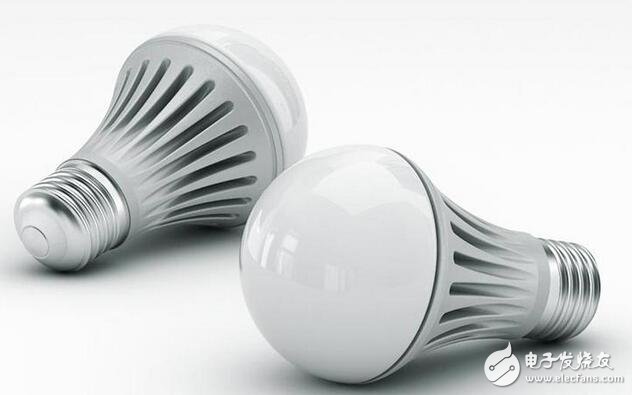

01, the chip has poor antistatic ability
The anti-static index of the LED lamp bead depends on the LED light-emitting chip itself, which is basically independent of the encapsulation material's expected packaging process, or the influence factor is small and very subtle; the LED lamp is more susceptible to electrostatic damage, which is separated from the two pins. Relationship, the distance between the two electrodes of the bare chip of the LED chip is very small, generally less than one hundred micrometers, and the LED pin is about two millimeters. When the electrostatic charge is to be transferred, the larger the spacing, the easier it is to form a large potential difference. , that is, high voltage. Therefore, it is often more prone to electrostatic damage accidents after being sealed into LED lights.
02, chip epitaxial defects
In the high-temperature crystal growth process of the epitaxial wafer, the substrate, the residual deposits in the MOCVD reaction chamber, the peripheral gas and the Mo source all introduce impurities, which will penetrate into the epitaxial layer and prevent nucleation of the gallium nitride crystal to form various kinds. Various epitaxial defects eventually form tiny pits on the surface of the epitaxial layer, which also seriously affect the crystal quality and performance of the epitaxial film material.
03, chip chemical residue
Electrode processing is the key process for making LED chips, including cleaning, evaporation, yellowing, chemical etching, fusion, and grinding. It will come into contact with many chemical cleaning agents. If the chip cleaning is not clean enough, it will cause harmful chemicals to remain. These harmful chemicals react electrochemically with the electrodes when the LEDs are energized, resulting in dead lights, light decay, darkness, and blackening. Therefore, identifying chip chemical residues is critical to LED packaging plants.
04, chip damage
Damage to the LED chip directly leads to LED failure, so it is important to improve the reliability of the LED chip. In the evaporation process, it is sometimes necessary to fix the chip with a spring clip, so that a pinch is generated. If the development of the yellow light is incomplete and the mask has holes, there will be residual metal in the light-emitting area. In the pre-stage process, various processes such as cleaning, evaporation, yellow light, chemical etching, fusion, grinding, etc. must use tweezers and flower baskets, carriers, etc., so there will be scratches of the die electrodes.
The effect of the chip electrode on the solder joint: the evaporation of the chip electrode itself is not reliable, resulting in the electrode being peeled off or damaged after the wire; the poor solderability of the chip electrode itself will lead to solder ball soldering; improper storage of the chip will lead to oxidation of the electrode surface and surface contamination. Etc., slight contamination of the bonding surface can affect the diffusion of metal atoms between the two, causing failure or solder joints.
05, the chip of the new structure process is incompatible with the light source material
The new structure of the LED chip electrode has a layer of aluminum, which acts to form a mirror in the electrode to improve the light extraction efficiency of the chip, and secondly to reduce the amount of gold used in the evaporation of the electrode to reduce the cost. However, aluminum is a relatively active metal. Once the packaging plant is not well controlled, the aluminum reflective layer in the gold electrode reacts with the chlorine in the glue to cause corrosion.
LED bracket
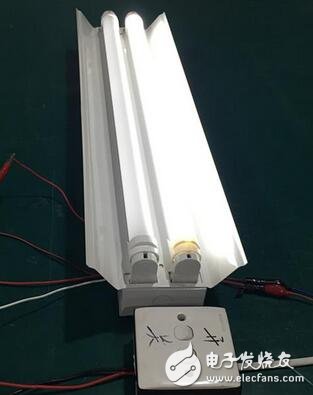
06, the silver plating layer is too thin
The existing LED light source on the market selects copper as the base material of the lead frame. In order to prevent oxidation of copper, the surface of the stent is usually plated with a layer of silver. If the silver plating layer is too thin, the stent is liable to yellow under high temperature conditions. The yellowing of the silver-plated layer is not caused by the silver-plated layer itself, but by the copper layer under the silver layer. At high temperatures, copper atoms diffuse and penetrate the surface of the silver layer, causing the silver layer to yellow. The oxidizability of copper is the biggest drawback of copper itself. When copper is oxidized, thermal and thermal performance will be greatly reduced. Therefore, the thickness of the silver plating layer is crucial. At the same time, both copper and silver are susceptible to corrosion by various volatile sulfides and halides in the air, causing darkening of the surface. Studies have shown that discoloration increases the surface resistance by about 20-80%, and the power loss increases, so that the stability and reliability of the LED are greatly reduced, and even lead to serious accidents.
07, silver plating layer vulcanization
The LED light source is afraid of sulfur because the sulfur-containing gas undergoes a vulcanization reaction with the silver plating layer of the light source through the porous structure of the silica gel or the support gap. After the vulcanization reaction of the LED light source, the functional area of the product will be blackened, the luminous flux will gradually decrease, and the color temperature will drift significantly. The vulcanized silver after vulcanization will increase in conductivity with increasing temperature, and it is prone to leakage during use; The condition is that the silver layer is completely corroded and the copper layer is exposed. Since the gold wire two solder joints are attached to the surface of the silver layer, when the silver layer of the bracket functional region is completely vulcanized and eroded, the golden ball appears to fall off, and a dead light appears.
08, silver plating oxidation
Jinjian detection found that the sulfur/chlorine/bromine element is harder to find in the business of initial blackening of exposed LEDs. However, the silver-plated LED light source shows signs of blackening, which may be related to silver oxidation. However, pure element analysis and detection methods such as EDS spectrum analysis are not easy to determine oxidation, because oxygen in organic substances such as air environment, sample surface adsorption and encapsulant can interfere with the determination of detection results. Therefore, the conclusion of determining oxidation blackening needs to be used. SEM, EDS, micro-infrared spectroscopy, XPS and other professional testing and a series of reliability comparison experiments such as light, electricity, chemistry, environmental aging, combined with professional testing knowledge and electroplating knowledge for comprehensive analysis.
09, poor plating quality
The quality of the coating is mainly determined by the crystal structure of the metal deposit. Generally, the finer the crystal structure, the denser, smoother and more protective the coating. This finely crystallized plating layer is referred to as a "microcrystalline deposited layer". Jin Jian pointed out that a good plating layer should be crystallized, smooth, uniform and continuous, and no pollutants, chemical residues, spots, black spots, charring, roughness, pinholes, pitting, cracks, delamination, Defects such as foaming, wrinkling, peeling, yellowing, crystal plating, and partial plating.
In the practice of electroplating production, the thickness of the metal coating and the uniformity and integrity of the coating are one of the important indicators for checking the quality of the coating, because the protective properties and porosity of the coating are directly related to the thickness of the coating. The special change is the cathode coating, and as the thickness increases, the protective properties of the coating also increase. If the thickness of the coating is not uniform, the thinnest part is often destroyed first, and the remaining part of the coating is thicker and loses its protective effect.
The porosity of the coating is high, and corrosive gases such as oxygen enter the corroded copper matrix through the pores.
10, organic pollution
Jin Jian also pointed out that because the electroplating process will use a variety of organic-containing syrups, if the silver-plated layer is not cleaned or a poor quality and deteriorated syrup is used, the residual organic matter will be in the environment where the light source is lit. Under the action of light, heat and electricity, organic matter may undergo chemical reactions such as redox and cause discoloration of the surface of the silver plating layer.
11, nozzle material
The material of the plastic is the key to the heat conduction of the LED package. The gold detection shows that if the PPA bracket is a nozzle material, the plastic performance of the PPA will be reduced, resulting in the following problems: poor high temperature tolerance, easy deformation, yellowing, low reflectivity. The water absorption rate is high, the stent will change in size due to water absorption and the mechanical strength will decrease; the combination with metal and silica gel is poor, and it is relatively matched with many silica gels. These potential problems make the lamp be difficult to use at a slightly larger power. Once the power range is exceeded, the initial brightness is high, but the attenuation is fast, and the lamp is dimmed after a few months.
Phosphor
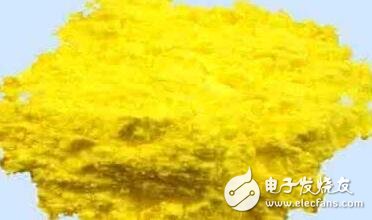
12. Phosphor hydrolysis
The nitride phosphor is easily hydrolyzed and fails.
13, the mechanism of fluorescent self-heating
The self-heating mechanism of the phosphor makes the temperature of the phosphor layer tend to be higher than the p-n junction of the LED chip. The reason is that the conversion efficiency of the phosphor cannot reach 100%, so a part of the blue light absorbed by the phosphor is converted into yellow light, and another part of the light energy absorbed by the phosphor in the high light energy density LED package becomes heat. Since the phosphor is usually blended with silica gel, and the thermal conductivity of silica gel is very low, only 0.16 W/mK, the heat generated by the phosphor will accumulate in a small local area, causing local high temperature, and the optical density of the LED. The larger the phosphor, the greater the heat generated by the phosphor. When the temperature of the phosphor reaches above 450 degrees Celsius, carbonization of the silica gel near the phosphor particles occurs. Once there is carbonization and blackening in some places, the light conversion efficiency is lower. This area will absorb more light energy from LEDs and convert more heat, and the temperature will continue to increase, making the carbonization area larger and larger.
Solid crystal glue
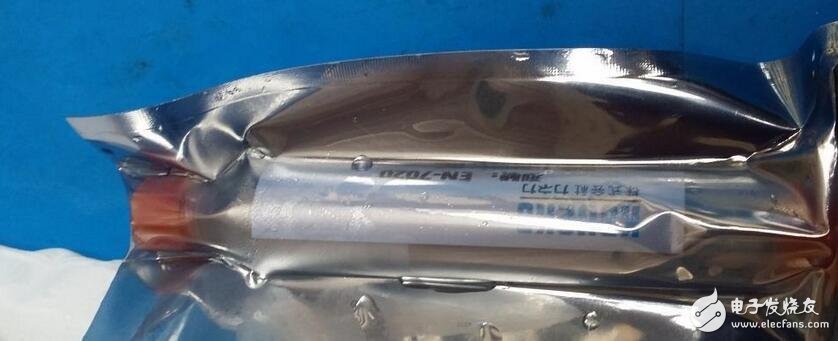
14, silver peeling
The base of the conductive silver paste is epoxy resin material, and the thermal expansion coefficient is much larger than that of the chip and the bracket. In the environment of the thermal shock of the lamp bead, the stress will be generated due to the heat problem, and the effect in the environment with severe temperature changes will be more In order to intensify, the colloid itself has tensile breaking strength and elongation, and when the tensile force exceeds, the colloid is cracked. The solid crystal glue peels off at the interface, the heat dissipation sharply deteriorates, the heat generated by the chip cannot be led out, and the junction temperature rises rapidly, which greatly accelerates the process of light decay.
15, silver glue layering
The silver powder particles are dispersed in the slurry system in a suspended state. The silver powder and the matrix are affected by many factors such as density difference, charge, cohesion, force and structure of the dispersion system, and the phenomenon of sedimentation and stratification of the silver powder often occurs. It will cause the product to sag during hanging, the thickness of the coating is not uniform, and even affect the physical and chemical properties of the coating. The delamination will also affect the heat dissipation, bonding strength and electrical conductivity of the device.
16, silver ion migration
A customer uses a silicone package, a vertical flip-chip light source bonded by a conductive silver paste, and a leakage phenomenon occurs. Through the analysis of the bad lamp beads, Jinjian detected abnormal silver elements on the side of the chip, and observed that the silver particles gradually diffused from the bottom positive silver paste region to the side of the upper P-N junction of the chip. Jin Jian determined that the failure of the lamp bead leakage is most likely caused by the ion migration of silver ions from the solid silver paste on the side of the chip. Silver ion migration phenomenon is gradually formed during the use of the product. As the migration phenomenon increases, the final silver ion will turn on the P-N junction of the chip, resulting in a low resistance path on the side of the chip, resulting in abnormal leakage current of the chip. In the case, even the chip is short-circuited. The reason for silver migration is multi-faceted, but the main reason is that the silver-based material is damp. After the silver glue is wet, the invading water molecules ionize the silver and migrate along the side of the chip under the action of the electric field from the bottom to the top. Therefore, Jinjian Testing recommends that customers carefully use the silicone package, silver glue to bond the vertical flip chip lamp beads, use the gold tin eutectic soldering method to fix the chip on the bracket, and strengthen the waterproof performance detection of the lamp.
17, solid crystal glue does not dry
The curing agent for silicone for LED encapsulation contains a platinum (platinum) complex, which is very susceptible to poisoning. The poisoning agent is any nitrogen (N), phosphorus (P), sulfur (S). Compound, once the curing agent is poisoned, the silicone is not completely cured, which will result in a high coefficient of linear expansion and an increase in stress.
Packaging adhesive
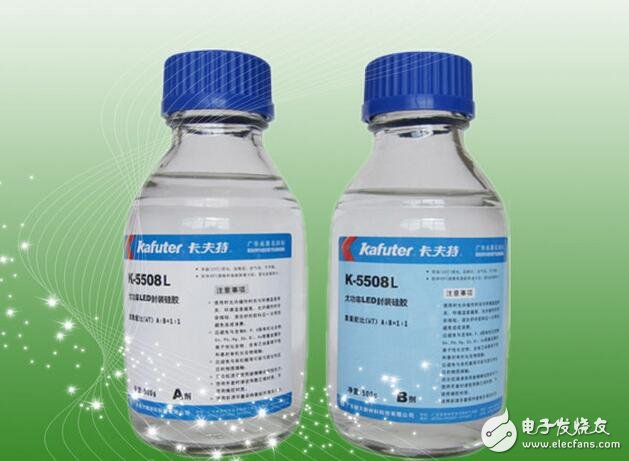
18, poor heat resistance of glue
According to our tests, pure silica gel begins to crack at 400 degrees, but the heat resistance of modified silica gel with epoxy resin is lowered to the level of epoxy resin. When this modified silica gel is applied to high-power LED Or in a high temperature environment, there will be a phenomenon of colloidal yellowing, blackening, cracking and dead lights.
19, the glue does not dry
The curing agent for silicone for LED encapsulation contains a platinum (platinum) complex, which is very susceptible to poisoning. The poisoning agent is any nitrogen (N), phosphorus (P), sulfur (S). Compound, once the curing agent is poisoned, the silicone is not completely cured, which will result in a high coefficient of linear expansion and an increase in stress.
The substances which are prone to "poisoning" of silica gel include organic compounds such as N, P, and S; heavy metal ion compounds such as Sn, Pb, Hg, Sb, Bi, and As; and organic compounds containing an unsaturated group such as an ethynyl group. Pay attention to the following materials:
Organic rubber: sulfur vulcanized rubber such as gloves
Epoxy resin, polyurethane resin: amine, isocyanate curing agent
Integrated silicone RTV rubber: especially using Sn-based catalyst
Soft polycyanide: plasticizer, stabilizer
Flux
Engineering plastics: flame retardants, heat-resistant agents, UV absorbers, etc.
Silver plated, gold-plated surface (the main reason for the plating solution at the time of manufacture)
Degassing by the Solder register (caused by silicone heat curing)
20, the package rubber linear expansion coefficient is too large
In the environment of the thermal shock of the lamp bead, the stress will be generated due to the heat problem, and the effect will be more intensified in the environment where the temperature changes drastically. The colloid itself has the tensile breaking strength and the elongation rate. When the tensile force exceeds, the colloid is Cracked open.
21, the glue contains chlorine
However, at present, the domestic epoxy resin production enterprises generally have a small production scale, the management mode and production process are backward, and the degree of automation of the operation machinery is not high, which makes it difficult to guarantee the parameters of the epoxy resin. The production of low-quality epoxy resin is related to the status quo of China's current industry, and the industry needs to be upgraded.
The chlorine in the epoxy resin not only causes chlorination corrosion on the silver plating layer of the stent, the alloy wire or other active metal and the chip electrode (aluminum reflective layer), but also can cooperate with the amine curing agent to affect the curing of the resin. Chlorine content is an important physical property index of epoxy resin. It refers to the mass fraction of chlorine contained in epoxy resin, including organic chlorine and inorganic chlorine. Inorganic chlorine affects the electrical properties of the cured resin. The content of organic chlorine indicates the content of the part of the chlorohydrin group in the molecule that has not been closed-loop, and its content should be reduced as much as possible, otherwise it will affect the curing of the resin and the properties of the cured product.
In order to more effectively prevent the phenomenon of electrode chlorine corrosion and reduce the quality risk of the whole industry, Jinjian has exclusively launched the “Golden Certified Chlorine Free” testing service to LED manufacturers. “Golden Certified Chlorine Free” is designed to confirm whether LED glue and chips contain excessive levels of chlorine and the detection accuracy reaches PPM. The contents of the certification report can be found on the Jinjian Testing website. Com query. With the "Golden Certified Chlorine Free Certification" service, LED buyers can purchase raw materials with "Golden Certified Chlorine Free Certification" with confidence, greatly reducing the risk of raw material procurement.
Gold Line
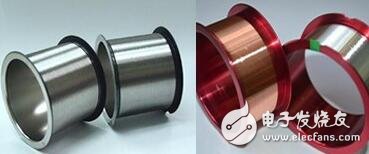
22, copper alloy, gold-clad silver alloy wire, silver alloy wire instead of gold wire
The gold wire has the advantages of high electrical conductivity, good thermal conductivity, corrosion resistance, good toughness, and excellent chemical stability, but the price of the gold wire is expensive, resulting in high packaging cost. In the periodic table, four metal elements of gold, silver, copper and aluminum in the transition metal element have high electrical conductivity. Many LED manufacturers are trying to develop copper alloys, gold-clad silver alloy wires, and silver alloy wires to replace expensive gold wires. Although these alternatives are superior to gold wires in some properties, they are much less chemically stable. For example, silver wire and gold-coated silver alloy wires are susceptible to sulfur/chlorine/bromination corrosion, and copper wires are easily oxidized. In encapsulated silica gels similar to water-absorbing and breathable sponges, these alternatives make the bonding wires susceptible to chemical corrosion, the reliability of the light source is reduced, and the LED lamp beads are easily broken and dead.
23, diameter deviation
1 gram of gold can be used to draw gold wire with a length of 26.37m and a diameter of 50μm (2 mil). It can also draw a gold wire with a length of 105.49m and a diameter of 25μm (1 mil). If the length of the gold wire is fixed, if the diameter of the incoming gold wire is half of the original, the resistance measured by the gold wire is one quarter of the normal.
Jinjian test pointed out that for suppliers, the finer the diameter of the gold wire, the lower the cost, and the higher the profit at the same price. For LED customers using gold wire, the purchase of gold wire for cutting corners on the diameter will increase the risk of gold wire resistance and the reduction of the fuse current, which will greatly reduce the life of the LED light source. The 1.0 mil gold wire life is necessarily shorter than the 1.2 mil gold wire, but the simple test of the packaging factory is not tested, and the gold gauge can provide the incoming inspection of the gold wire diameter.
24, surface defects
(1) The surface of the wire shall have no nicks, pits, scratches, cracks, bumps, discounts and other defects that reduce the service life of the device. During the drawing process, the surface defects appearing on the surface of the wire lead to an increase in current density, which makes the damaged part easy to be burned, and the ability to resist mechanical stress is reduced, causing breakage of the inner lead damage.
(2) The surface of the gold wire should be free of oil, rust, dust and other adhering substances, which will reduce the bonding strength between the gold wire and the LED chip and between the gold wire and the bracket.
25, the breaking load and elongation is too low
A good gold wire that can withstand the impact generated by resin encapsulation must have a specified breaking load and elongation. At the same time, the breaking force and elongation of the gold wire play a key role in the quality of the wire bonding, and the bonding wire having a high breaking rate and elongation is more advantageous for bonding. Too soft gold wire can cause the following defects: (1) the arch sag; (2) the spherical instability; (3) the ball neck is easy to shrink; (4) the gold wire is easy to break. Too hard gold wire will lead to the following defects: (1) chip electrode or epitaxial punching hole; (2) gold ball neck fracture; (3) difficulty in forming alloy; (4) difficulty in arch wire arc control.
ConclusionAfter enumerating so many reasons, we can conclude that the simple appearance of an LED dead light may be caused by dozens of reasons. In the past, most of the LED industry encountered problems and could not see the nature of the problem. To solve the problem fundamentally, Jinjian, after focusing on the LED material testing company, came up with a lot of experience, and through the division of labor, the teams from different professions, high-precision testing equipment, and the collection of industry failure cases based on big data. , to draw more accurate conclusions.
WOSEN is a professional manufacturer and supplier of Led Flood Light, Led Street Light, Led Solar Light, etc. For more information, please visit https://www.wosenled.com/ or contact admin@wosenled.com or WhatsApp +86-13425434349
November 04, 2024
November 04, 2024
November 12, 2024
November 11, 2024
この仕入先にメール
November 04, 2024
November 04, 2024
November 12, 2024
November 11, 2024

Privacy statement: Your privacy is very important to Us. Our company promises not to disclose your personal information to any external company with out your explicit permission.

Fill in more information so that we can get in touch with you faster
Privacy statement: Your privacy is very important to Us. Our company promises not to disclose your personal information to any external company with out your explicit permission.